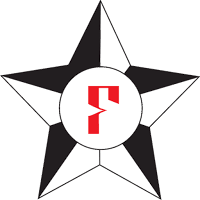Typed functional languages like Clean, Haskell and OCaml were developed within academia in the 1990s. Around 2010, languages like F# and Scala were gaining some acceptance in industry. Today there are many great typed functional languages, several used in industry. I will give a brief side by side introduction to the following languages:
- F#
- F*
- Haskell
- OCaml
- Rust
- Scala
- TypeStript
These languages are best of breed so the point of this article is not to compare them by merits, but to explore what language to use for what purpose. Follow up post covers F# vs Scala.
F# (F Sharp)
F# is a mature, open source, cross-platform, functional-first programming language.
- Core: Strict, strong, inferred, hybrid
- Popularity: Some use in industry and backed by Microsoft
- Complexity: Easy to learn, but part of a big ecosystem
- Maturity: It is 14 years old and part of the .NET, so quite mature
- Tooling: Very good
- Cross platform: with Mono and .NET Core and JavaScript
- IDE: Visual Studio, VS Code
Strengths
Simple, open source, cross platform with good integration with the whole .NET universe.Well suited for backend programming, Azure, web-serving and finance.
Type providers give easy typed access to a lot of different data sources.
Issues
IDE, GUI programming and LINQ is not as well developed as for C#.F* (F Star)
F* is a general-purpose functional programming language with effects aimed at program verification.
- Core: Strict, dependently typed, tactical theorem prover, constraint solver, refinement type, algebraic effect tracking
- Popularity: Research language with very few users
- Complexity: Quite complex
- Maturity: Several researchers are working on it, but it is not used a lot
- Tooling: Not super polished, but build on top of good tooling in OCaml and F#
- Cross platform: OCaml, F#, C, WASM and ASM
- IDE: Support for Emacs
Strengths
F* has implemented a lot of powerful and interesting ideas that you can try and actually use. It is a very well developed dependently typed language.Good for validating highly sensitive security programs, encryption protocols.
Issues
There is little adaptation and it has not stood the test of time yet.Haskell
Haskell is an advanced purely-functional programming language.
- Core: Lazy, pure, effect tracking using effect monads
- Popularity: Prestigious research language with some industry adoption. Number 19 on Red Monk June 2019 list
- Complexity: Very complex language
- Maturity: It has been around for 30 years, used in industry, used for research
- Tooling: New build tool Stack is quite nice
- Cross platform: Runs on OS X, Linux and Windows
- IDE: Several decent plugins for: VSCode, emacs, Spacemacs, SpaceVim and IntelliJ
Strengths
Very influential research language, test bed for a lot of language research and development.It has been optimized for years and has some use in industry.
Type classes are built into the language so you can reuse code very broadly.
Aesthetically pleasing if you love math or category theory.
Issues
It is a very complex language and tracking effect in non pure computations is quite hard.It has some use in industry, but is still very much a research language.
OCaml
OCaml is a strictly evaluated functional language with some imperative features.
- Core: Strict, strong, inferred, hybrid
- Popularity: Used as teaching language and by a few big companies
- Complexity: It is a simple language to learn
- Maturity: It has been around for 20 years and is used in industry so quite mature
- Tooling: Recently it got a good build tool and package manager
- Cross platform: Runs on a lot of different operating system, hardware
- IDE: Language server with good integration with Eclipse, VS Code, Emacs and Vim
Strengths
Great REBL, very fast compiler, makes it suited for tooling. Facebook using it for web tooling.Popular in theorem provers.
Issues
Concurrency is not great.Rust
 |
| TM Mozilla |
Rust is a multi-paradigm system programming language focused on safety, especially safe concurrency.
- Core: Inferred, linear type, nominal, static, strict, strong, build around concurrency
- Popularity: Quite popular and raising. No 21 on Red Monk June 2019 list
- Complexity: Somewhat complex language
- Maturity: Pretty new language, but used in Firefox and by AWS Firecracker
- Tooling: Excellent build tool and package manager
- Cross platform: Work on many different OSs
- IDE: Good VS Code support
Strengths
Rust is a combination of ideas from OCaml, Haskell, C++, linear types and low level imperative control. It is very fast and well suited for system programming and secure programming. There is no garbage collector and no runtime, this makes Rust great for writing libraries and WebAssembly. Rust has started to make inroads in cloud infrastructure.Issues
Getting rid of the garbage collector makes the language harder to understand and program in.It is a pretty new language, still developing, and there are fewer libraries.
Scala
Scala combines object-oriented and functional programming in one concise, high-level language.
- Core: Strict and lazy, nominal and structural, hybrid, implicits for IoC
- Popularity: Very popular. No 13 on Red Monk June 2019 list. Spark is written in Scala
- Complexity: It is a quite complex language, but it is easy to get started with
- Maturity: Very stable. Run on JVM, well integrated with JVM ecosystem
- Tooling: Great build tool and package managers
- Cross platform: JVM and JS. Also early work on native / LLVM version
- IDE: IntelliJ, VS Code, Eclipse
Strengths
Back-end programming, data engineering, web serving.It is a great all around language. A lot of work has gone into creating language constructs that makes Scala work well with Java libraries. In Scala 2.0 this was not the case.
Spark is a cornerstone in data engineering.
Issues
There is quite a lot of complexity: Implicits, macros, type classes / ad hoc polymorphism is possible but it takes some work.Not super easy to set up a small project.
GUI programming support is not that great.
TypeStript
TypeScript brings you optional static type-checking along with the latest ECMAScript features.
- Core: Gradually typed, structural, many new sophisticated type constructs, data language
- Popularity: Very popular. No 10 on Red Monk June 2019 list
- Complexity: Pretty complex
- Maturity: A lot of money has gone into JavaScript, it is improving but it still feels wonky
- Tooling: NPM. There are a lot of tools in the Nodes ecosystem, too many
- Cross platform: Runs in every browser and on Node.js
- IDE: Amazing support in VS Code
Strengths
Typescript makes big JavaScript codebases a lot more robust.It is really easy to process semi structured data in json.
Starting to see some use of TS in machine learning e.g. with TensorFlow.js.
Issues
The JavaScript modules seem simple like in Python or Java, but there are many different module systems and it is pretty complicated. There are a lot of NPM packages but it still feels less mature. Getting setup with a small project with unit tests is more work than it should be.Concurrency: Async await dramatically simplified call back style of programming, but still not great.
Golden Age Programming Languages
For many years I was puzzled about why language evolution seems to favor bloated and hacky development, while ignoring more principled computer science ideas. Twenty years ago I got very excited to read about these new functional languages with strong types. Unfortunately they were only popular in academia.
We are finally living in the golden age of programming languages. It just took some time. Development is moving quickly now and not slowing down.
Apologies in advance for omissions, outdated information and other mistakes.






No comments:
Post a Comment